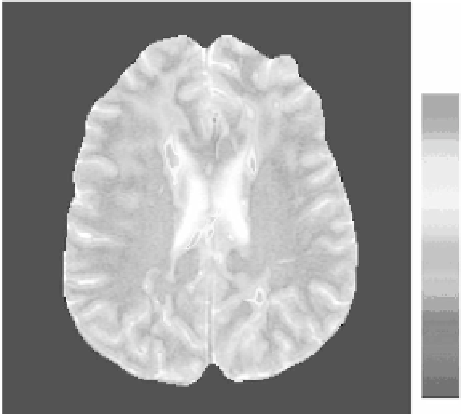Image Processing Reference
In-Depth Information
14.6.4
B
RAIN
Although there is no clinical precedent for “brain palpation,” it is possible that
measurements of elastic properties might be useful for characterizing brain disease.
In addition, such measurements are necessary prerequisites for finite element anal-
ysis studies of brain trauma and surgical simulation. However, the estimates of the
shear modulus of brain tissue available in the literature are inconsistent and do not
even agree on the relative stiffness of gray and white matter [62]. These estimates
were obtained
ex vivo
from specimens without blood pressure and metabolic activ-
ity. This may explain why they span several orders of magnitude and disagree on
whether gray matter is softer or harder than white matter. Cerebral elastography
studies have been performed to date in 19 normal volunteers [62]. Waves are clearly
observed to propagate throughout the brain, and the elastograms (Figure 14.10)
demonstrate that the
in vivo
shear stiffness at this frequency of white matter (average
value 14.2 kPa) is higher than that of gray matter (average value 5.3 kPa). The
difference is statistically significant. No discernible relationship between age and
shear modulus has been found.
14.6.5
M
USCLE
MRE has been applied to skeletal muscle to quantify the change in stiffness with
muscle loading [63]. Five volunteers supported varying loads during MRE exam-
inations to assess the biceps brachii muscle during active force generation. The
24 kPa
0 kPa
FIGURE 14.10
An elastogram of the brain of a normal volunteer overlaid on the MR
magnitude image.







































Search WWH ::

Custom Search